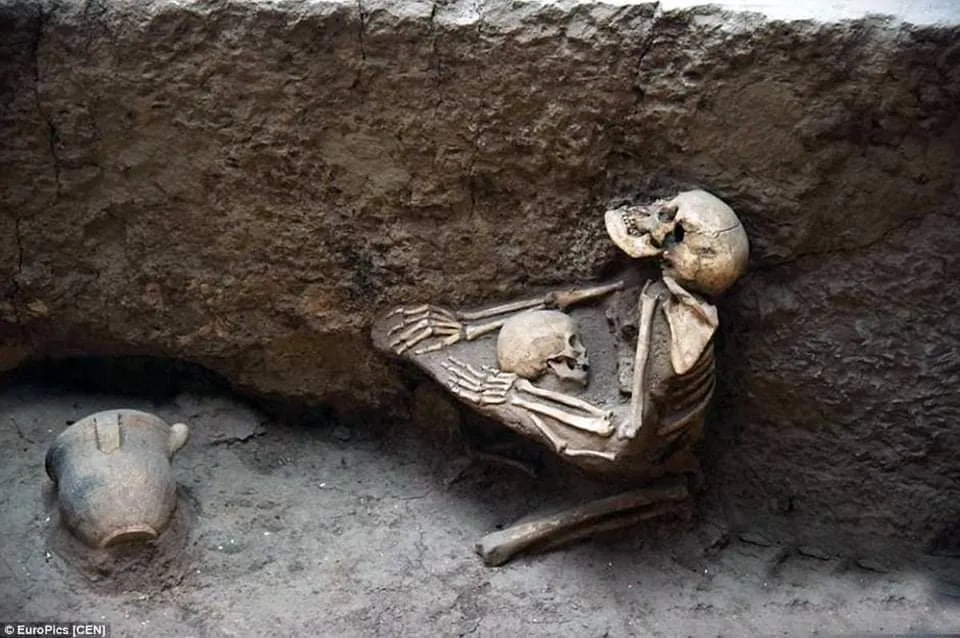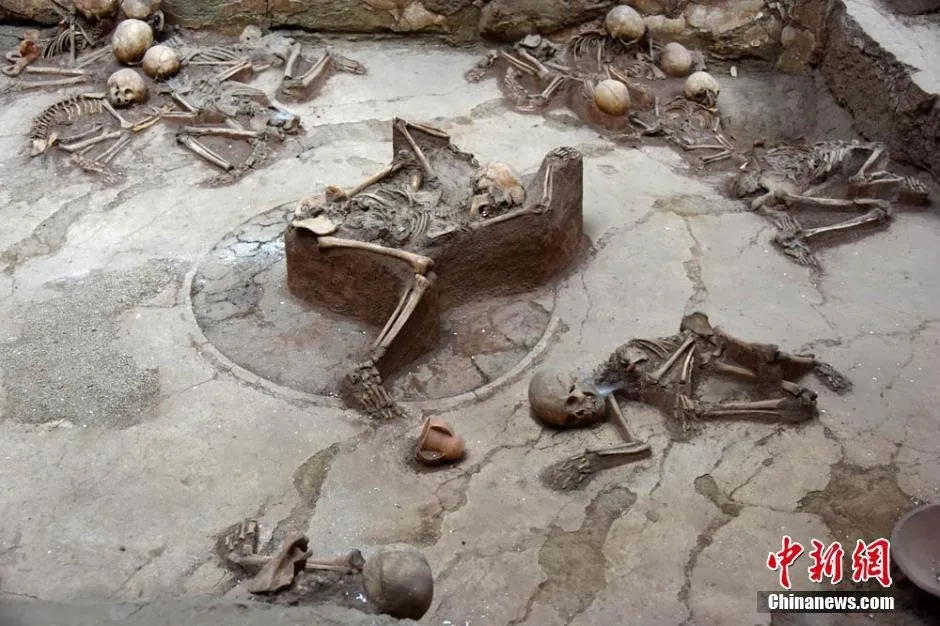4,000-Year-Old Skeletons: A Mother’s Last Embrace

Images of skeletons from the Lajia site in China’s Qinghai province are captivating. The painstaking excavation and pedestaling of the bones reveal adults and children in a 4,000-year-old embrace. But while these images have caught the media’s attention today, the archaeological site has been excavated since 1999 by archaeologists primarily from the Institute of Archaeology of the Chinese Academy of Social Sciences and the Qinghai Provincial Institute of Antiquity and Archaeology.
By Kristina Killgrove
The Lajia site is associated with the Qijia culture, dating from the late Neolithic to the early Bronze Age, and is located in the Guanting Basin of the upper Yellow River. This site has yielded everything from cave-like houses to pottery kilns to preserved millet noodle remains. The spectacular preservation appears to be the result of a catastrophic event: around 1900 BC, an earthquake struck the area, triggering landslides. In a 2013 paper in The Holocene , Chun Chang Huang and colleagues explained that “huge mudflows suddenly buried and destroyed dwellings and killed women and children in their homes.” But these mudflows, though triggered by an earthquake, were “partly created by early settlers” through “soil erosion, massive weathering, and debris accumulation on hillsides, greatly intensified by human disturbance of the landscape by shrub removal as early as 6,000 years ago to 3,950 years before present.”

Of course, my interest was piqued by the image of the skeletons of an adult and a child embracing, particularly since the title referred to a mother and child (since DNA is the only way to tell the sex of young children). The skeletons’ main publication (in English, that is), is a 2007 paper in the American Journal of Physical Anthropology by Shi-Zhu Gao and colleagues at Jilin University in China dealing with the DNA analysis of the 16 skeletons from two houses flooded by landslides.
Gao and his colleagues were interested in whether the 16 individuals were related, and looked at mitochondrial DNA, which is passed down the maternal line. “Twelve [DNA] sequences from individuals found in one house were assigned to only five haplotypes,” they write, “consistent with possible close kinship.” The two skeletons — an adult woman in her 30s and a 3- or 4-year-old boy — whose image has captivated the media today are supposed to be mother and son, but many media outlets refer to “mother and son.” The only way to tell the sex of a subadult is through DNA analysis, but the 2007 publication contains no information on the sex of the child.
Even more interesting, however, were the DNA results from these two individuals. Gao and colleagues write that “the two mtDNA sequences from individuals from F3 (one of the houses) differ from each other at five nucleotide positions. Although these two subjects may be genetically linked by a mother/son (or daughter) relationship, this result unambiguously excludes kinship through the maternal lineage.” They further explain that these individuals and their mtDNA haplotypes were different from individuals from F4 (the other house). A patrilineal relationship remains a possibility since their skeletal remains were found close together.”
There was one group that represented a mother-child pair based on DNA analysis: a woman in her 20s and a 1- to 2-year-old child from house F4. I don’t believe this is the pair illustrated in the image circulated above for two reasons: the child’s skull in that photo is more consistent with a 3- to 4-year-old child, and based on the diagram in the 2007 paper and the image below, the photos show two different adult-child pairs. I couldn’t find a clear image that represents the biological mother-child pair, although the photo above shows most of the groups from house F4. Based on my cross-referencing of the 2007 paper with these images, the biological mother-child pair is represented by the skeletons at the bottom.







